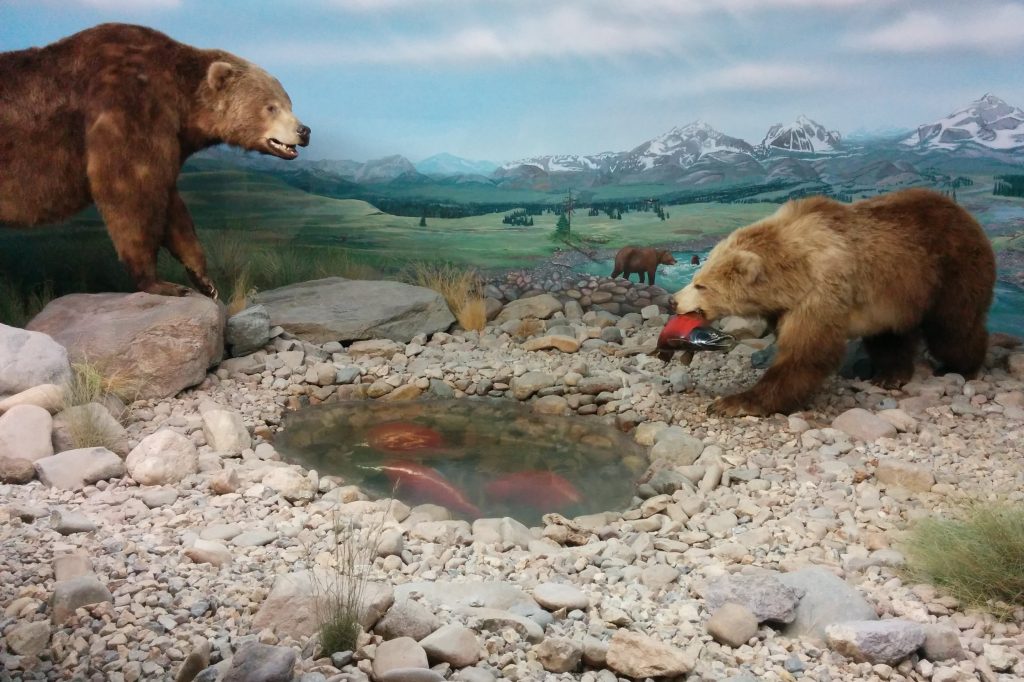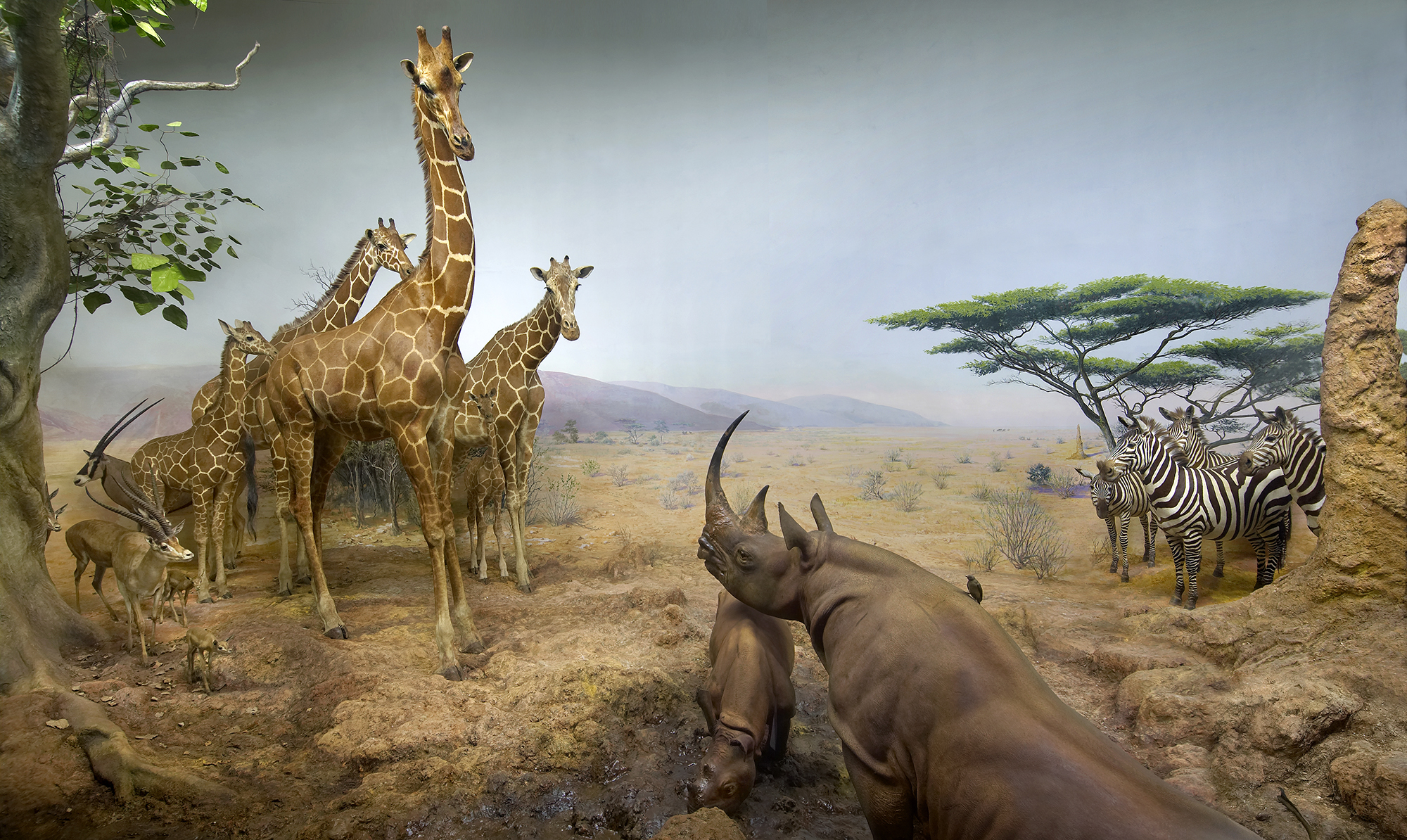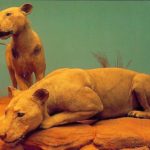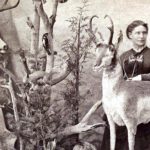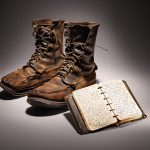Four museums where you can still see impressive taxidermy displays.
Photo above: An African water hole scene at the Chicago Field Museum. Image courtesy of the Chicago Field Museum.
My high school required students to complete at least fifty hours of community service before graduation, and one of the optional volunteer destinations was the nearby Cincinnati Museum of Natural History. I chose to serve at the museum, in part because I figured walking visitors through the museum and explaining the differences between reptiles and amphibians would be more enjoyable than clearing brush along the highway during Ohio’s long, gloomy winter.
The museum gig turned out to be much better than I anticipated, especially since I was granted access to some of the behind-the-scenes locations where a treasure trove of taxidermy mounts were stored. For a kid growing up reading Hemingway and O’Connor, having the opportunity to see and touch a real greater kudu shoulder mount was fascinating.
For generations, museum taxidermists provided the general public with up-close access to the world’s great wildlife (until the early 2000s, the Smithsonian kept a taxidermist on staff). And although many museums have divested themselves of their mounts, there are still some great taxidermy displays in museums across the country. Here are four of my favorites.
Field Museum, Chicago, Illinois
You may already know that the Field Museum houses the mounts of the infamous man-eating lions of Tsavo, but there’s much more to see here, including Fighting African Elephants, which includes full-body mounts of two African bull elephants engaged in battle. Other key displays that shouldn’t be missed include The Watering Hole, a diorama with life-size mounts of African game including black rhino, giraffe, zebra, oryx, Grant’s gazelle, and other species set against an East African background.
The Field Museum doesn’t just honor African game, though. Be sure to visit the Deer in Four Seasons display, which highlights the life cycle of the white-tailed deer, North America’s most popular big game animal. The museum also pays homage to Native American culture and resides on the ancestral homeland of the Three Fires Confederacy of the Ojibwe, Odawa, and Potawatomi Nations. This is just a sampling of the fascinating items on display at the Field Museum.
University of Iowa Museum of Natural History
The University of Iowa’s Museum of Natural History in Iowa City, Iowa, boasts one of the most comprehensive collections of preserved animals in the region, and it’s a must-see attraction when you’re traveling through the Hawkeye State. In addition to their extensive dioramas of animals in their natural habitats, the museum also houses an impressive collection of skeletons and a number of preserved insects. It’s little wonder that scientists and artists frequent this destination to examine morphological details of species from around the globe.
“Collecting at the University of Iowa Museum of Natural History began over 160 years ago, in 1858,” says Jessica Smith, communications director for Pentacrest Museums (which include the UI Natural History Museum and the nearby Old Capital Museum). “Research expeditions in the late 1800s and early 1900s, private donations, and the acquisition of orphaned collections have been the main sources of collected materials. Today, our collections comprise over 140,000 specimens, objects, and artifacts. Our collections support research, exhibition galleries, and high-impact learning opportunities. It’s true what they say–great universities have great museums.”
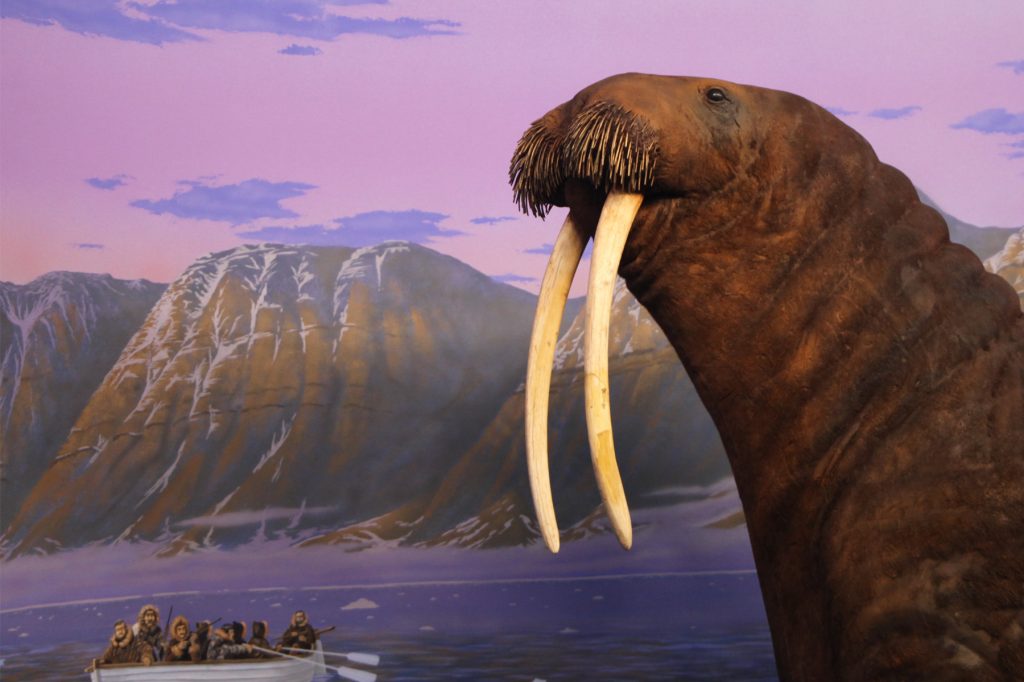
College of Idaho’s Orma J. Smith Museum of Natural History
The Orma J. Smith Natural History Museum in Caldwell is a worthwhile stop when you’re traveling in Idaho. Named one of the thirty Most Amazing Higher Education Natural History Museums by Best College Reviews, this collection, which is located in the basement of the College’s Boone Hall, boasts a collection of native and domestic species preserved by some of the region’s most outstanding taxidermists. Museum director William Clark says that the bulk of species in the collection are native to Africa and North America. Some of the taxidermists whose work is currently on display include William Lancaster and Stan Buzzini of Idaho and Cliff Brooks of California.
Some of the mounts on display include leopard and Cape buffalo, a variety of African plains game, and North American species including black and grizzly bears and elk. The museum also houses a very large collection of bird mounts, preserved insects, and many fossils. The Orma J. Smith Natural History Museum hosts a variety of educational events throughout the year.
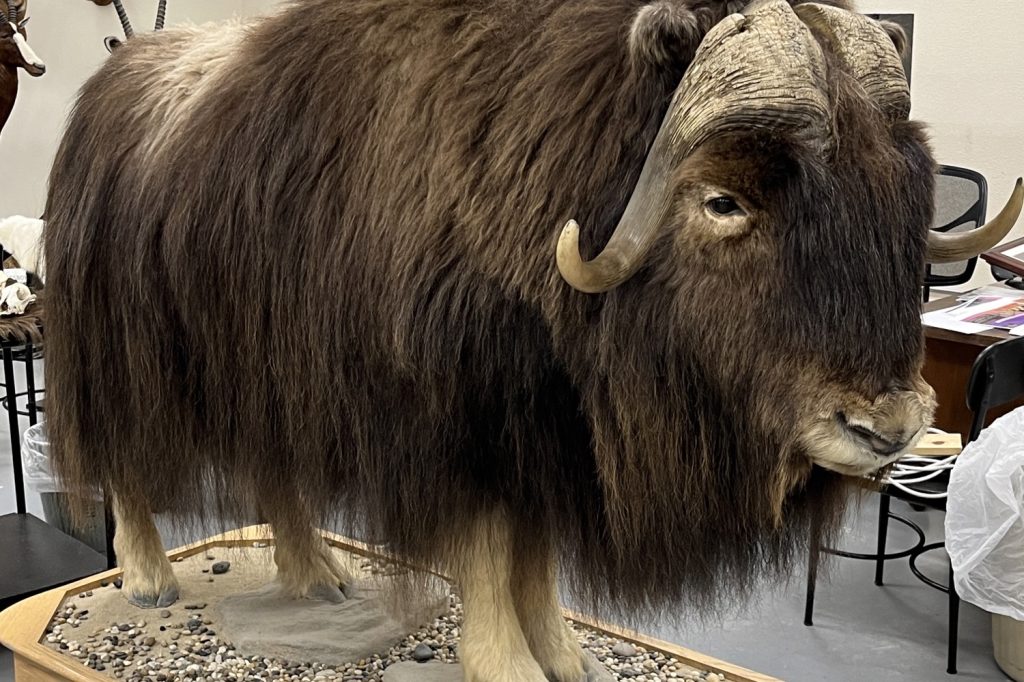
Photo courtesy of Jan Summers
SCI International Wildlife Museum
SCI’s International Wildlife Museum, which opened in 1988 in Tucson, Arizona, was designed to mimic a Foreign Legion outpost that famous hunter C.J. McElroy visited while on safari in Chad. Perhaps the most impressive display is the 30-foot-tall indoor mountain that houses the great sheep and goat species from around the globe. In addition to an impressive collection of taxidermy mounts, there are also bronzes (most notably Portland-based bronze artist Lorenzo Ghiglieri’s “A King’s Roar,” which features an African lion) as well as displays of extinct species like woolly mammoths and Irish elk. But the real draw in this museum are the twenty-two dioramas featuring natural scenes with wild game mounts. One of the newest additions is an exhibit displaying game animals of southern Arizona, including the world-record non-typical Coues deer.
In addition to the mounts there are also live animals on the property, and SCI has worked with Arizona Fish & Game to stock the property’s pond with native fish species like the Arizona chub and Gila topminnow. If you can’t make it to Tucson, that doesn’t mean you can’t enjoy some of what the museum has to offer. SCI provides online presentations to schools in the U.S. and abroad.
